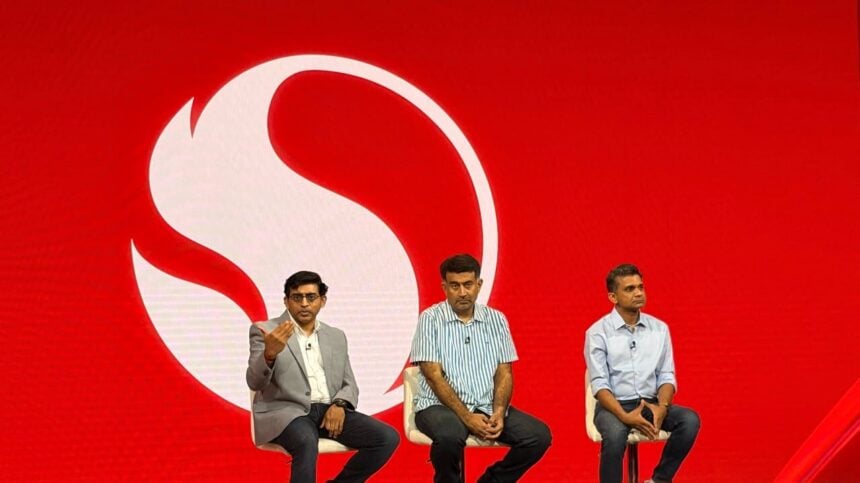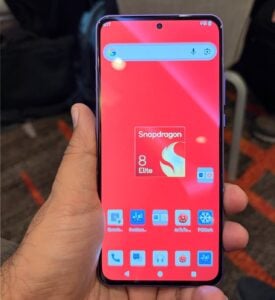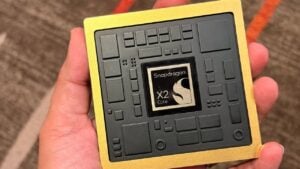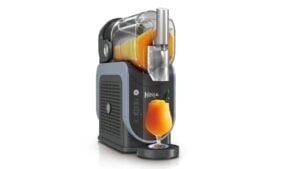At the Snapdragon Summit, Qualcomm’s senior leadership hosted a Q&A session to dive deeper into the newly announced Snapdragon X2 Elite and X2 Elite Extreme platforms. Kedar Kondap (SVP & GM of Compute and Gaming), Vinesh Sukumar (VP of Product Management for AI), and Mandar Deshpande (Sr. Director of Product Management for Compute) fielded questions on performance, architecture, AI capabilities, gaming potential, and the company’s vision for the PC market .
Snapdragon Guardian and Enterprise Security
One of the big topics was Snapdragon Guardian, Qualcomm’s hardware-level security and manageability subsystem. Unlike competitors, Guardian works not just over Wi-Fi but also over cellular networks, enabling IT teams to remotely lock, wipe, or manage devices no matter where they are. Qualcomm confirmed that Guardian will start appearing in devices around mid-2026, with enterprise adoption likely lagging consumer launches as IT departments go through validation processes .
AI and NPU Upgrades for Windows on Snapdragon
AI was front and center, with executives reiterating that the new NPU provides massive headroom for Windows 11 Copilot+ features and third-party AI workloads. Qualcomm expects developers to take full advantage of the heterogeneous compute architecture, with Microsoft’s WinML going GA (General Availability) to make NPU offloading seamless. The focus is on time-to-first-token performance, tokens-per-second efficiency, and running small language models (SLMs) locally while offloading complex tasks to the cloud when needed .
Gaming and GPU Performance
When asked about gaming, Qualcomm confirmed that the Adreno GPU in the X2 Elite delivers a 2.2× performance uplift over its predecessor, and this gain translates directly into higher frame rates for AAA games, not just synthetic benchmarks.
The company hinted at handheld gaming PCs powered by Snapdragon X2, thanks to its scalable TDP that can support thin-and-light laptops, fanless mini-PCs, and even compact handheld form factors. Qualcomm is also partnering with Microsoft on anti-cheat systems and developers to optimize titles for Windows on Snapdragon .
CPU Architecture and Memory Support
Qualcomm confirmed that the X2 Elite features a mix of 12 prime cores and 6 performance cores for better power efficiency, battery life, and thermal headroom. The X2 Elite Extreme can address up to 128GB of memory, with the reference design sporting 48GB of LPDDR5X on a 12-channel DDR configuration. Qualcomm also teased that large generative AI models can run locally on the GPU when battery efficiency isn’t the top priority .
Thermal Innovation and Form Factors
One of the highlights of the demo area was a fanless mini-PC powered by Snapdragon X2 Elite. Qualcomm is experimenting with MEMS-based cooling technology through its partnership with Airjet, allowing silent, slim designs without sacrificing thermal performance. Some prototypes also included micro-fans for hybrid cooling solutions .
Driver Updates Made Easy
Qualcomm addressed one of the common pain points of Windows on ARM laptops: GPU driver updates. The company has introduced the Adreno Control Panel, enabling users to download the latest graphics drivers directly from Qualcomm. These updates promise optimizations for new games and performance improvements over time, bringing the experience closer to how NVIDIA and AMD handle PC graphics driver updates .
Market Strategy and Launch Timelines
Qualcomm reiterated its goal to achieve 12% PC market share by FY2029, focusing on thin-and-light laptops, long battery life, and differentiated AI experiences. The company expects the first Snapdragon X2 Elite and Elite Extreme devices to hit shelves in the first half of 2026, potentially sooner if OEM partners accelerate development .
The Snapdragon X2 Elite family is shaping up to be Qualcomm’s most ambitious PC platform yet, blending next-gen AI acceleration, competitive gaming performance, and enterprise-grade manageability in sleek fanless or thin-and-light designs. With Windows on Snapdragon maturing rapidly, driver updates going mainstream, and more OEM partners on board, 2026 could be the year these devices finally break through to a broader audience.























